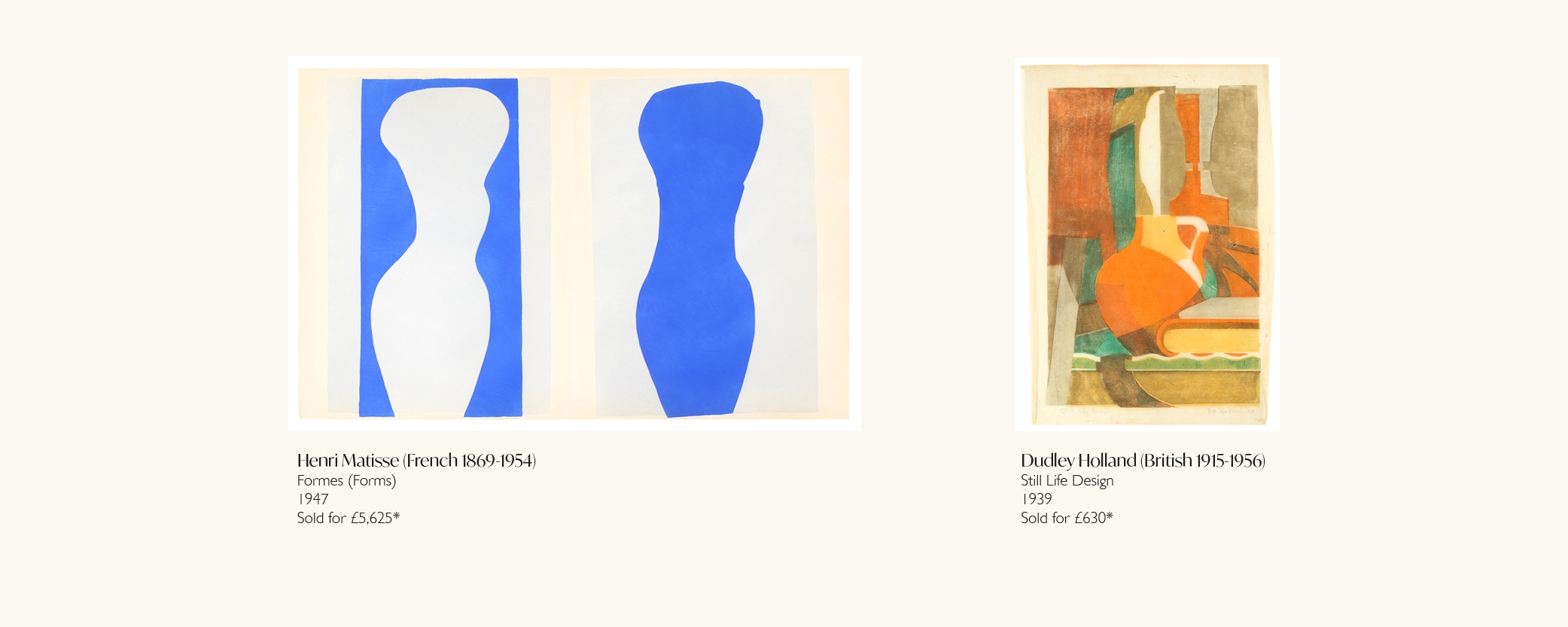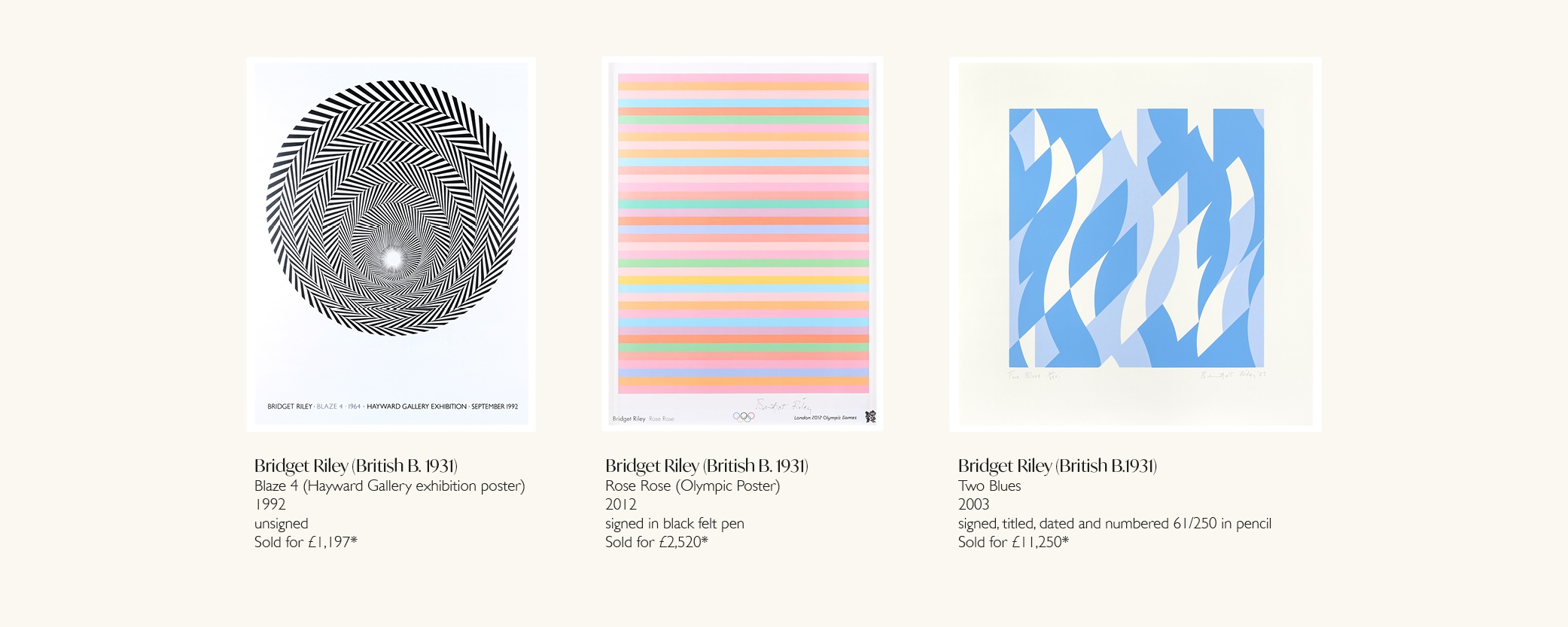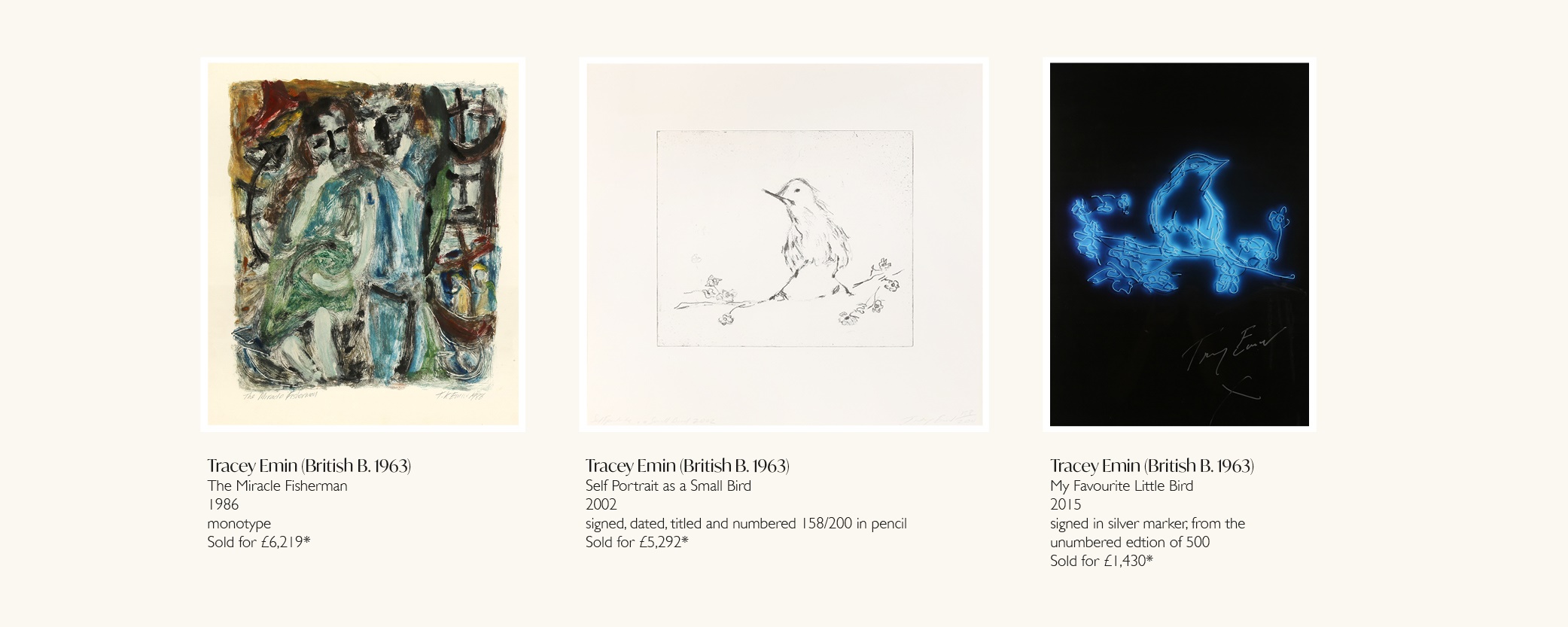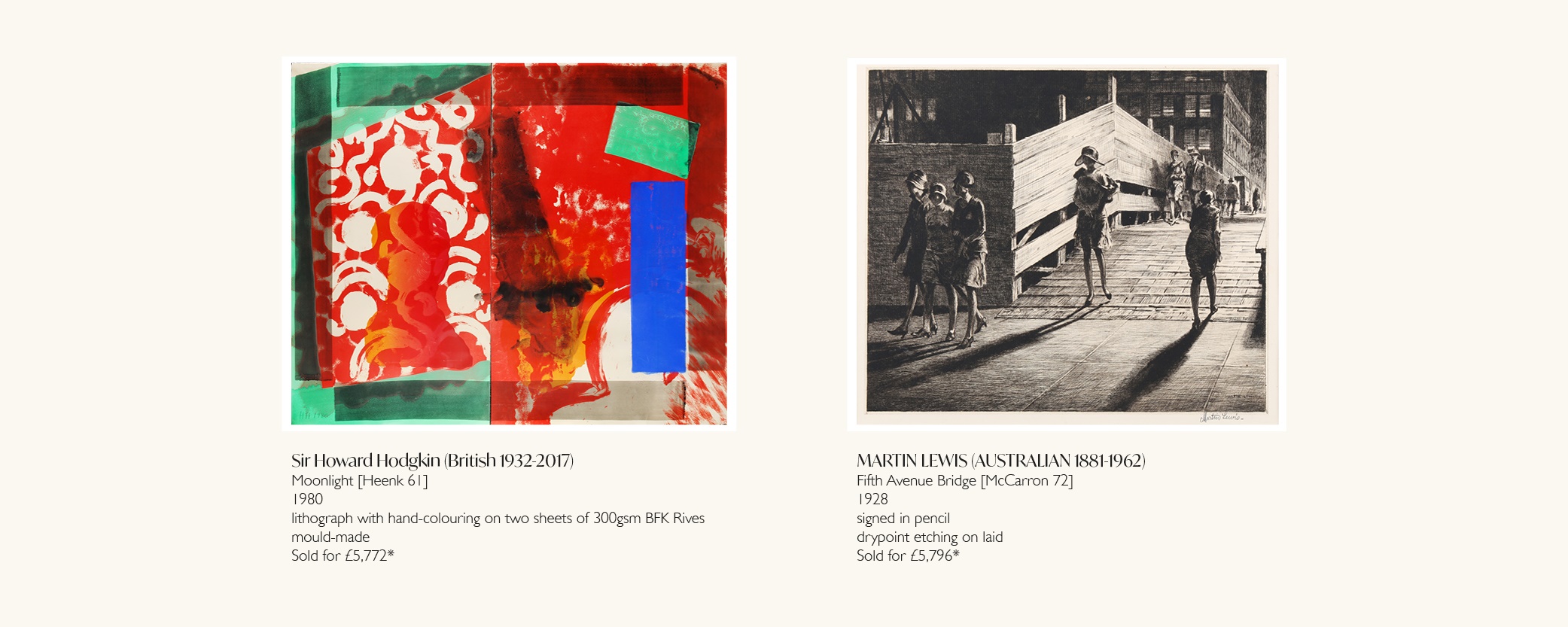

If you've inherited a print or added one to your collection, you may be wondering about its value. Assessing a print's worth involves specialist knowledge, research, and awareness of current market trends.
Here are the key elements our experts consider when providing a print valuation.
The artist is the most important factor in determining a print’s value. Prints by blue-chip artists, such as Pablo Picasso or David Hockney, often command significantly higher prices. Their original works are usually far beyond the reach of the average collector, making prints a more accessible way to own a work by a renowned name.
For example, Henri Matisse’s Formes from his 1947 Jazz portfolio remains highly sought after.
That said, lesser-known artists can still produce valuable prints, particularly when the technique is exceptional. A good example is Still Life Design, a linocut by the relatively unknown Dudley Holland, which achieved an excellent result at auction.

A hand-signed print holds greater appeal to collectors. A signature provides a direct link to the artist and significantly increases a print’s value.
Even unsigned posters can become more desirable when signed by the artist. This theory is demonstrated perfectly by the Bridget Riley works below, unsigned Blaze 4 (Hayward Gallery exhibition poster), hand signed Rose Rose (Olympic Poster) and hand signed and numbered Two Blues.

Prints are often issued in editions, and the size of that edition affects value. A limited edition is more desirable, and smaller editions tend to be worth more due to scarcity.
Look to the lower left of the sheet to find the edition number (e.g. 7/100 means the seventh print from an edition of 100).
Some collectors believe certain numbers (such as 1/100) are more valuable, but this is largely a misconception. While personal preference might lead a buyer to favour one number, it does not significantly affect the wider market value.
Prints without an edition number may be unique works known as monotypes. These are typically the most valuable, comparable in price to a drawing by the same artist. This is clearly demonstrated in the work of Tracey Emin. There is a tangible jump in price from My Favourite Little Bird (edition of 500) to Self Portrait as a Small Bird (edition of 200) and then to The Miracle Fisherman (monotype).

The technique used also has an impact on value. Some of the most sought-after methods include:
Etchings and engravings
Lithographs
Screenprints
Woodcuts and linocuts
Hand-finished prints
By contrast, offset lithographs and digital prints are often less valuable, especially when mass-produced. However, some artists choose these methods for signed limited editions. L. S. Lowry, for example, produced many signed and numbered offset lithographs which remain highly collectable.
Some lovely examples of these techniques include Sir Howard Hodgkin’s Moonlight and Martin Lewis’ Fifth Avenue Bridge.

Provenance refers to a print’s ownership history. If a print has been part of a recognised collection or gifted directly by the artist, its value is often enhanced.
For modern and contemporary works, this might include a Certificate of Authenticity (COA). For example, any Banksy print must be accompanied by an official Pest Control COA. Without this, the work’s authenticity, and therefore its value, is highly questionable.
Be cautious, however. Not all COAs are valid. A certificate is only reliable if issued by the original publisher or the artist’s official body. Certificates from independent galleries or dealers do not provide verified proof of authenticity.
One example is a Banksy print given directly by the artist to an employee at Dismaland, accompanied by appropriate provenance.
Provenance: gifted by Banksy to the present owner who was an employee at Dismaland, at the end of the theme park's five week run in 2015.
Condition is crucial in determining value. Any flaws, no matter how small, can impact price, particularly in works on paper which are vulnerable to light, moisture, dust and handling.
Look out for:
Discolouration, creasing, foxing (brown spots) or tears in the paper
Faded, smudged or degraded pigment
A print in pristine condition will always achieve a better result at auction than one that shows signs of damage or poor storage.
To receive a complimentary valuation from our Prints and Multiples department, please get in touch directly at prints@chiswickauctions.co.uk or submit an online valuation.